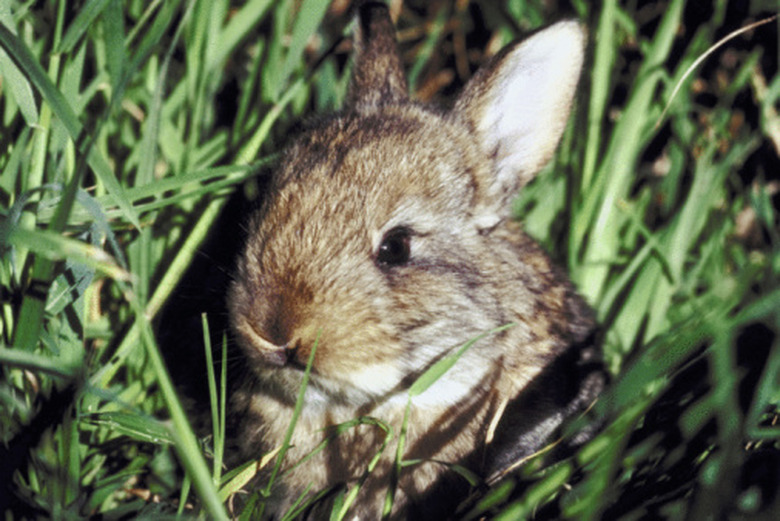Do Rabbits Live In Holes In The Ground?
Many species of rabbit live in burrows, which are a network of tunnels dug in the ground. Burrows are important for rabbits' survival. In the wild, burrows provide rabbits with a safe place to sleep and raise their young. They also offer protection from predators.
Hare and Rabbit Species
Hare and Rabbit Species
Rabbits are found across every continent except for Antarctica. There are 29 rabbit species across ten genera. Rabbits are in the Leporidae family along with hares.
Hares are typically larger than rabbits with longer ears and legs. Additionally, hares do not dig burrows as rabbits do. Instead, hares find shelter in dips in the ground and among grass when they are disturbed.
Another key difference between hares and rabbits is their birth and juvenile development. At birth, baby rabbits are altricial, which means their eyes are closed, they lack fur, and they are completely dependent on their mothers. Baby rabbits' vulnerable nature when they are young is one reason burrows are important for protection.
On the other hand, hares are born precocial, meaning they're born with their eyes open and their bodies are covered with fur. Compared with rabbits, hares are born ready to start exploring the world.
Rabbit Warrens
Rabbit Warrens
A warren is the name for the complex network of connecting tunnels or burrows built by rabbits and used as their home. The size, depth and complexity of warrens vary depending on the local geography and type of soil. Rabbit burrows tend to be between four and six inches in diameter. The entrance may be hidden among grass or behind vegetation.
Burrows tend to be dug at a gentle slope and can be as short as one foot or over 15 feet long. When digging, rabbits spread the dirt out across the ground on the surface rather than making a pile of dirt, helping to make the entrance less noticeable. Female rabbits often do the most digging as they build a warren around the central nursery burrow where they raise their young.
Typically, a dominant male rabbit called a buck defends the burrow territory and mates with the females in his warren. Females raise their litter of baby rabbits, called kittens, inside the nursery burrows. The kittens will not leave the safety of the warren until they are big enough to start looking after themselves, which may take up to five months or so.
Rabbit Predators
Rabbit Predators
Being small herbivorous mammals, rabbits have many predators. Small, complex rabbit burrows are an effective way to escape larger predators. Rabbit predators vary depending on where in the world they live but include cats (Felis spp.), foxes (Vulpes spp.), wild dogs (Canis spp.), large reptiles such as goannas (Varanus spp.) and birds of prey such as eagles (Accipitridae spp.).
Rabbit warrens often have what are called bolt holes which are less visible than main warren entrances. Bolt hole tunnels connect to the main tunnel system of a warren and are used by rabbits for a quick escape. Complex tunnel systems are useful for escaping predators like ferrets that are small enough to fit inside rabbit burrows.
Pet Rabbits
Pet Rabbits
It is important to allow pet rabbits the flexibility to dig holes as these are their natural behaviors. Rabbit cages with mesh on the base can result in their feet getting hurt or stuck when they try to dig a hole. Keeping pet rabbits stimulated helps them fulfill their digging needs so they don't cause problems by digging where they shouldn't.
Dig boxes made from children's swimming pools filled with sand, dirt or shredded paper enrich pet rabbits' lives by giving them a safe place to burrow. Creating tunnels and hiding places from cardboard boxes can also help stimulate natural behaviors. Moving the tunnels and boxes around helps keep the rabbits interested.
Some pet rabbits enjoy re-arranging and organizing their environment through a behavior called bunching, where they push and pull objects around until they are satisfied with their location. Giving rabbits their own pillows, towels and blankets to bunch enriches their environment and keeps them busy. As rabbits often share their warrens in the wild, pets should always be kept with at least one other rabbit.
References
Cite This Article
MLA
Jerrett, Adrianne. "Do Rabbits Live In Holes In The Ground?" sciencing.com, https://www.sciencing.com/do-rabbits-live-in-holes-in-the-ground-13406370/. 30 September 2021.
APA
Jerrett, Adrianne. (2021, September 30). Do Rabbits Live In Holes In The Ground?. sciencing.com. Retrieved from https://www.sciencing.com/do-rabbits-live-in-holes-in-the-ground-13406370/
Chicago
Jerrett, Adrianne. Do Rabbits Live In Holes In The Ground? last modified March 24, 2022. https://www.sciencing.com/do-rabbits-live-in-holes-in-the-ground-13406370/
